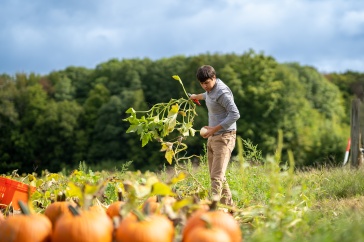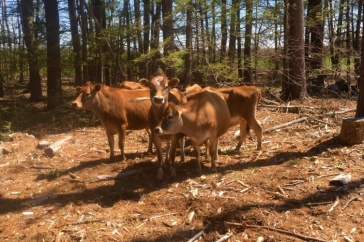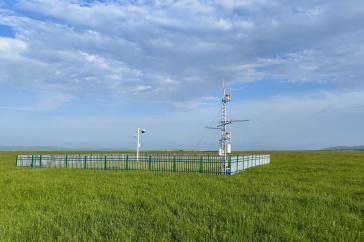When it comes to adapting to the changing environment of the Great Basin in the North American West, for small mammals, warming associated with climate change is only part of the problem: Humans have played a role, too.
That’s what UNH ecologist Rebecca Rowe found in a study that compared the response of small mammals to a period of natural rapid warming almost 13,000 years ago and to contemporary climate warming.
“Warming is a problem, but it’s not the only problem. Human impacts, particularly those leading to land-cover conversion, are having a dramatic impact on ecosystems,” says Rowe, an assistant professor in the department of natural resources and the environment. The research points to humans’ role in changing the region’s native shrubland to annual grasslands, particularly invasive cheatgrass, introduced more than a century ago and accelerated by human activities such as grazing and modernization.
Rowe and her co-author, Rebecca Terry of Oregon State University, examined thousands of years of fossilized owl vomit at Homestead Cave, west of Utah’s Great Salt Lake, to see how small mammals like mice and voles responded to the two periods of warming.
There, owls have roosted for millennia, regurgitating pellets that contain undigested skeletal remains of their small mammal prey. Owls continue to roost — and regurgitate — in Homestead Cave today, giving researchers an opportunity to compare the fossil remains of small mammals from the end of the Pleistocene period almost 13,000 years ago, characterized by ice retreat and warming temperatures, to current remains.
Measuring energy flow, the total energy needed to sustain the biomass of this community of small mammals over time, Rowe and Terry found that as the Earth warmed and the environment changed 13,000 years ago, energy flow was stable; one group of animals might decline, but another would take its place. Not so over the past 100 years, however. The researchers charted a steep decline in total energy flow.
“The ecosystems are losing their natural resilience, the ability of one group of species to compensate for the loss of another,” says Terry, who has been collaborating with Rowe since the two were in graduate school at the University of Chicago.
Rowe says it’s not only their findings that are significant, it’s the way they pieced together fossil and contemporary data to look at energy flow over time. The work overcomes a fundamental challenge in understanding our climate system by comparing it to the past.
This research is a “shining example of how modern ecology and paleoecology can be spliced together to decipher how ecological processes unfold over time scales inaccessible to direct observation or experimentation,” wrote Julio Betancourt of the U.S. Geological Survey in a commentary that accompanied the study in Proceedings of the National Academy of Sciences.
“People have a very short-term memory of what’s happened in the past. They think about what their grandparents experienced,” Rowe adds. “This study allows you to put changes in a deeper context, before the onset of the industrial revolution and intense human occupation.”
While Rowe’s research won’t revisit Homestead Cave in the immediate future, instead taking her elsewhere in the Great Basin as well as to the Arctic and the Bartlett Experimental Forest in New Hampshire’s White Mountains, her subject matter stays the same.
“Mostly I’m a rat-trapper,” she says of the trapping prowess she’s developed in the field. “My parents say I’m an overeducated exterminator.”
Kidding aside, rats, as well as voles, mice and other small mammals, are an ideal lens through which to examine changing ecosystems. “They’re the intermediate connection between plants and higher predators like mammals and birds, and they turn over quickly and respond quickly to changes in habitat and climate,” she says. “Small mammals are good indicators of ecosystem health.”
Originally published in UNH Magazine—Fall 2015 Issue
-
Written By:
Beth Potier | UNH Marketing | beth.potier@unh.edu | 2-1566



















































